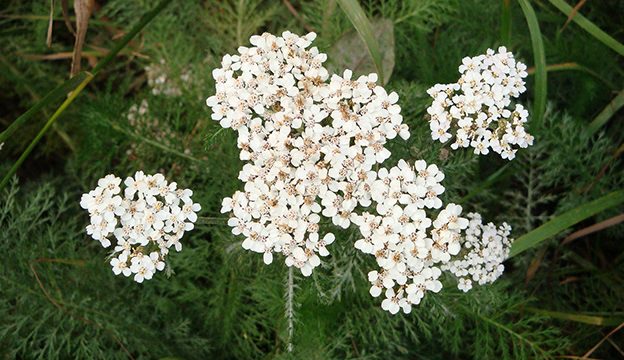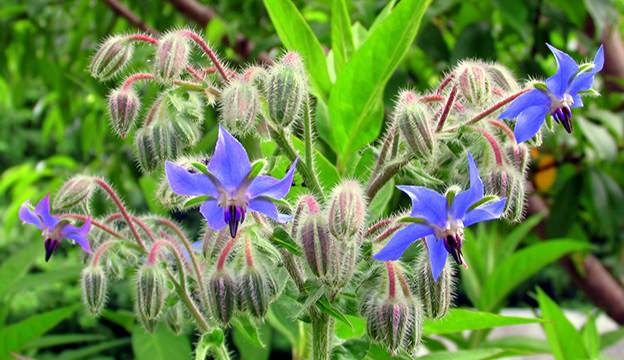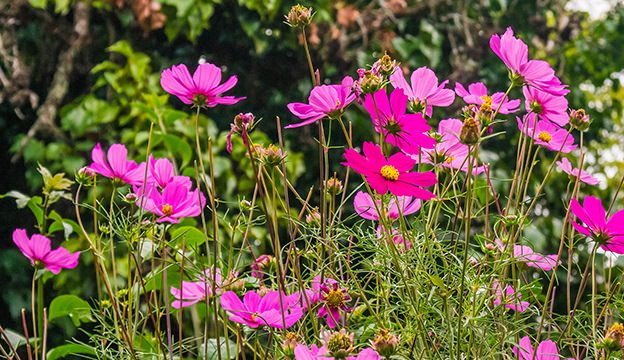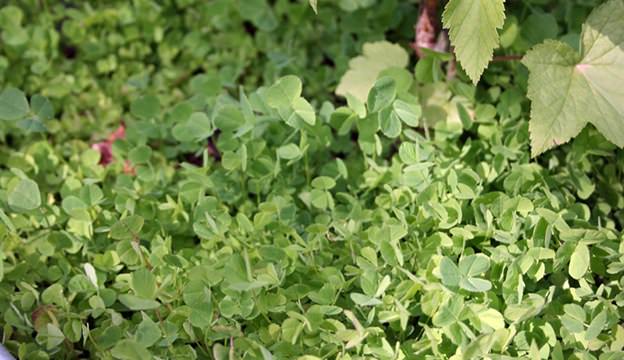
If you are perusing seed catalogs and planning your garden for the coming season, you may be thinking about ways to increase yields, prevent pests from damaging your crops, or growing more vigorous and tasty plants without resorting to chemical fertilizers, herbicides or pesticides. The age-old method of companion planting, used by gardeners from Ancient Rome to the Americas, addresses all of these common gardening issues.
Companion plants are vegetables, herbs, fruit trees and flowers grown together in a “buddy system” that encourages natural pest control and fertilization and attracts pollinators and other helpful wildlife to your crops. This garden technique is based on the simple idea that if certain plants are grown near one another, they will benefit each other.
Some companion planting techniques have been proven by scientists, but many are folk wisdom passed down through generations of farmers and gardeners, shared through word of mouth, classes and books. Many are based on research, and some just common sense. For example, combining shorter, taller and mid-sized crops eliminate spaces for unwanted weeds to grow and take over the garden.
The following list of some well-known plant companions that have been found to be useful in many gardens. Give one or more a try in your garden this year and see if you notice a difference.
Three Sisters

In this traditional Native American companion gardening technique, you plant corn, beans and squash together. Corn stalks act as a support for the beans. Beans draw nitrogen from the air to the soil, helping the heavy feeding sister plants grow heartier. Large, low-growing squash leaves act as a mulch, which deter weeds from growing around the plants.
Tomatoes and Basil

These are perhaps the most well-known vegetable garden companions. Basil helps prevent hornworms on tomatoes, while tomatoes provide some shade for basil. Their root systems also work well together: Tomatoes have deep roots, while basil has shallow roots, allowing them to grow without crowding each other.
Both basil and tomatoes can be started indoors from seed or purchased as plants. Both are warm-weather crops that should be planted outdoors only when nighttime temperatures are above 50 degrees F.
Comfrey

Many gardeners consider comfrey, an herb native to Europe, a “must have” plant. Comfrey is a nutrient fixer, drawing nitrogen, potassium, magnesium and calcium into its roots and leaves. The leaves can be cut and used as mulch or fertilizer or added to compost. The plant will grow back several times in a season. The beautiful flowers of comfrey attract pollinators and beneficial insects. The leaves are sometimes used in fruit orchards as a mulch around the base of the trees, and the roots of the plant are useful in breaking up clay soil. Comfrey is also a medicinal herb traditionally used for healing wounds. Propagate it using root cuttings.
Yarrow

This pretty wildflower that helps repel pests, attracts beneficial insects, acts as a natural fertilizer and helps prevent soil erosion. It benefits all crops. Yarrow is a medicinal herb; it comes in a variety of colors, but herbalists consider white yarrow to have the most medicinal properties. It can be propagated from division or started indoors from seed.
Borage

This lovely and edible blue flowers that often self seeds in the garden. Borage attracts pollinators and deters cabbage worms and tomato hornworms. Borage is a good companion for nearly all plants, and is particularly beneficial for tomatoes, cabbage and strawberries. It is easily propagated by seed.
Stinging Nettle

Another plant that many organic gardeners love, despite its “stinging” quality when touched or rubbed against, is stinging nettle. As a companion, nettle increases the oil content of many herbs, helps vegetables grow more vigorously and helps plants become more resistant to pests. Nettle can be used to enrich compost, and it attracts beneficial insects. Nettle is an edible green (it must be cooked), rich in many nutrients, including iron. Nettle can be propagated by division.
Rosemary

Rosemary benefits the growth of sage, cabbage, beans and carrots by deterring cabbage moths, bean beetles and, if cutting ares placed around carrot crowns, carrot flies. It is also considered a good companion for broccoli and sage. Rosemary is not cold hardy, so if you are in zone 6 or colder, overwinter it indoors. Rosemary can be propagated from stem cuttings.
Cosmos

These colorful, annual flowers are both lovely ornamentals and hard workers in the edible garden. Cosmos deter harmful insects and attract beneficial insects. They’re easy to grow from seed, pretty, and can be planted with any vegetables.
Nasturtiums

Considered a trap crop, nasturtiums attract aphids and flea beetles, keeping them from damaging other plants in your garden. Vining nasturtiums can also be planted as a groundcover that protect beneficial insects, like ground beetles and spiders. Nasturtiums are beautiful and edible; they make a spicy and festive addition to salads. Easy to propagate from seed, they’re good companions for nearly every vegetable.
Marigolds/Calendula (Pot Marigold)

The scent of marigolds is thought to confuse insects; it helps repel flea beetles, and attract pollinators/beneficial insects. Marigolds are often planted as companions to tomatoes, but are beneficial companions to just about every garden crop. They can be easily started from seed, and are grown as annuals.
Garlic/Onions

Garlic and onions are known for their ability to repel Japanese beetles, potato beetles, carrot flies, aphids and wildlife, including rabbits and deer. Garlic also repels tree borers, aphids, cabbage loopers, codling moths, snails, ants and cabbage maggots. It’s considered particularly beneficial when planted near fruit trees, roses, cucumbers, peas, celery and lettuce.
Cover Crops

Oats, buckwheat and vetch help prevent soil erosion, reduce water loss and enrich soil. These cover crops can be planted in beds early in the season, before crops are planted, or at the end of the season, after harvest, to improve the soil for the next growing season.
Living Mulch

Plants like buckwheat, alyssum and clover can be used to cover soil between plants and keep weeds from growing, while enriching the soil and attracting beneficial insects.





3 replies on “The 13 Best Companion Plants”
[…] know companion planting doesn’t mean seeding your garden beds next to your […]
[…] The 13 Best Companion Plants. PHOTO: Bernhard Friess/Flickr If you are perusing seed catalogs and planning your garden for the coming season, you may be thinking about ways to increase yields, prevent pests from damaging your crops, or growing more vigorous and tasty plants without resorting to chemical fertilizers, herbicides or pesticides. […]
[…] Permaculture Magazine – Back Issues. News Blog: "P" is for plants: Human urine plus ash equals tomato fertilizer, study says. The Humanure Handbook – Instructional Videos. The 13 Best Companion Plants. […]